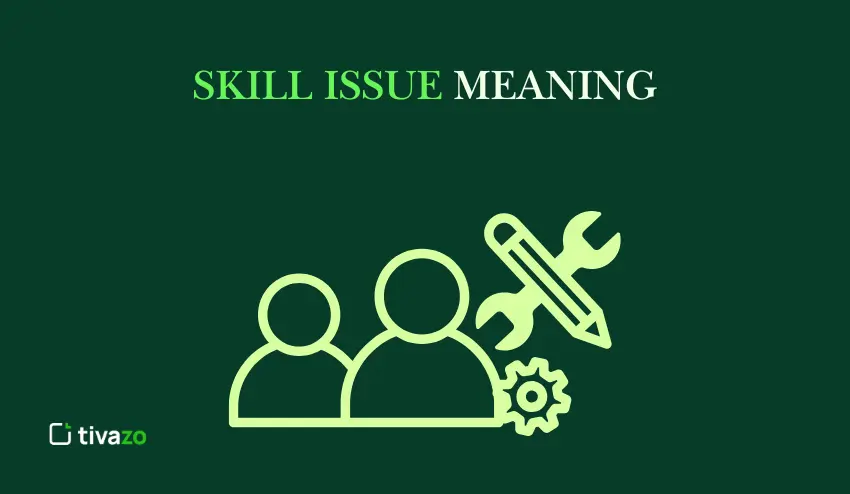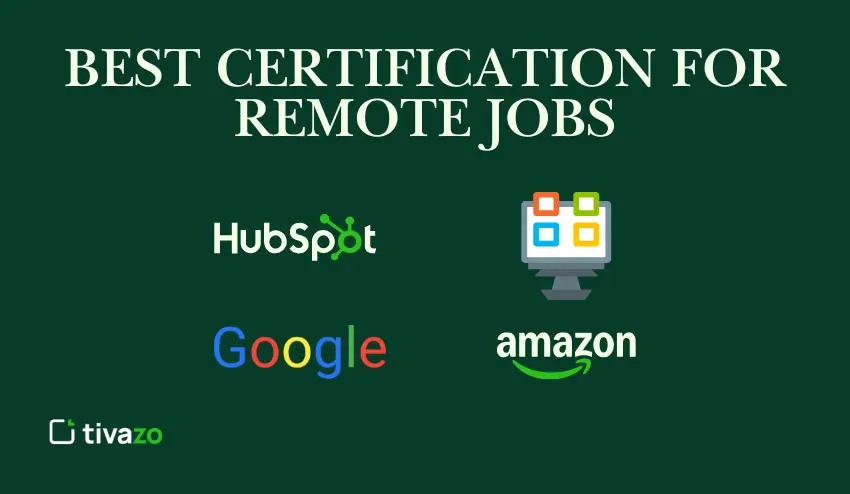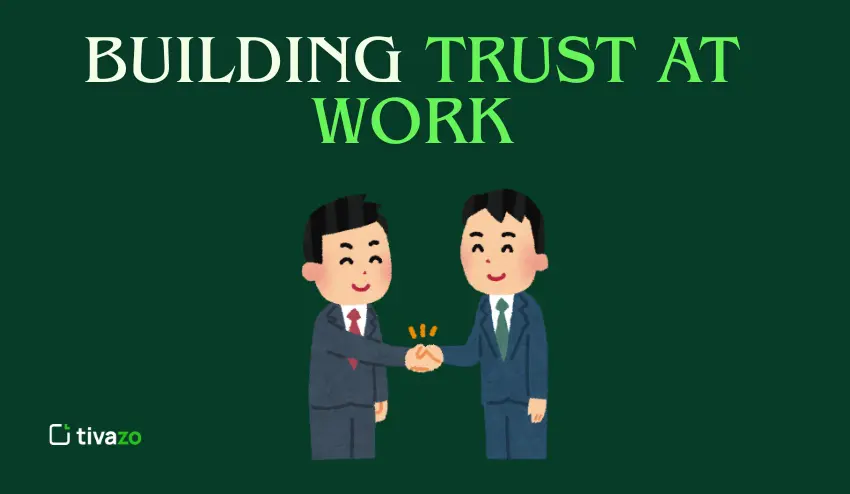In a rapidly changing world of work, it’s never been clearer that understanding the skill issue meaning is crucial for leaders in organizations everywhere. The terminology began as a phrase from online gaming, but it’s now become an issue that real-world organizations face in every possible sector. In the work context, the skill issue relates to the gap between what employees can do and what is asked of them by their roles when those roles are formalized. If the skill issue is not addressed, it results in lower productivity, decreased engagement, and impeded growth for the organization.
Modern organizations are experiencing skill issues as a result of rapid digital transformation, which, in turn impacts job expectations, especially in terms of accessibility to professional development. A manager who does not recognize skill issues and help employees overcome these deficits risks losing ground to competitors who are making an investment in employee upskilling and skill gap analysis.
Understanding the skill issue meaning in a workplace context allows leaders to better develop training opportunities, understand who is a better high-potential employee, and build stronger teams. When addressing skill issues, when they do happen, it provides the change for the organization to turn a weakness into growth and performance improvement.
What Is the Real Skill Issue Meaning in the Workplace?
The meaning of the skill issue is more than simple laziness or lack of ability. It’s the mismatch between what’s needed and what someone is able to do. To put it simply, a skill issue means that a person doesn’t have the ability or knowledge to fully demonstrate their potential.
A skill issue can occur in any job or role. For example, a skill issue may be related to technical skills (for example, experience using software, or data analysis) or soft skills (for example, communication, collaboration, or problem-solving).
Understanding the meaning of skill issues helps managers to get to the root of the problem instead of assigning blame for an employee’s performance. Most people want to come to work and do a good job, but they just haven’t gotten appropriate training or the right tools/resources to close the skill gap.
A skill issue is not indicative of poor attitude or laziness. It’s an opportunity for growth. When skill issues are identified and addressed in a timely manner, they become a pathway for upskilling and having individuals aligned more appropriately with their roles in work.
Types of Skill Issues in the Workplace
Skill issues come in many forms. Understanding the types highlights the specific problem area to diagnose issues and create effective solutions. One skill issue in one area may have little impact, while another skill issue could prevent an entire team from moving forward.
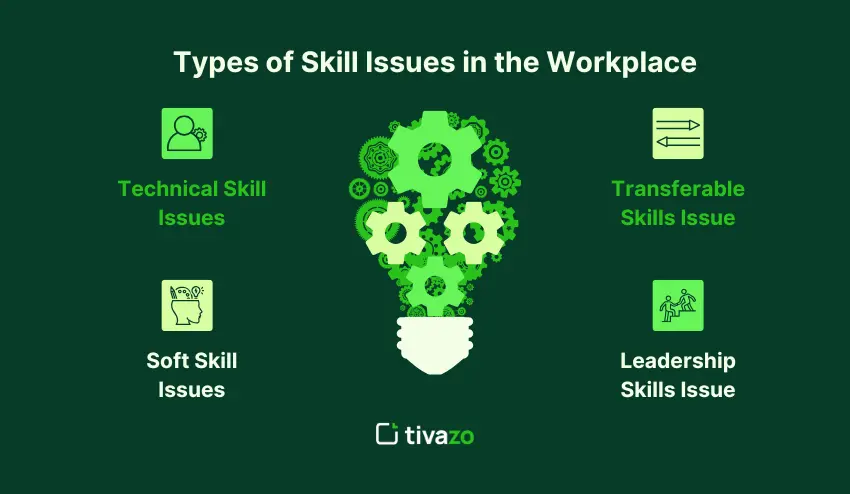
1. Technical Skill Issues
Technical skill issues refer to a gap in specialized knowledge needed to complete the work of the position. This could refer to how to use or proficiency with software, tools, machinery, or data analysis. For example, if an employee is struggling to use the CRM efficiently, it will slow down the sales reporting process. Tackling technical skill issues typically results in targeted training exercises, real-world practice, or credentials.
2. Soft Skill Issues
Soft skill issues refer to the effect on how employees engage, collaborate, communicate, and complete work in concert with others. The most common soft skill gaps are in communication, adaptability, and problem-solving. For example, when a team member cannot successfully collaborate on a project, the overall task may stall or the work may not meet the consensus of effort. Soft skills improve through workshops, coaching, and practice on the job.
3. Transferable Skills Issue
Skills that transfer across roles can sometimes be underutilized by employees, such as leadership, teamwork, critical thinking, or time management capabilities. If this gap is not addressed, it may affect career mobility as well as the general flexibility of the team. A training course that focuses on transferable or cross-functional skills can enhance how employees use their skills in different contexts.
4. Leadership Skills Issue
Issues with leadership skills can impact the way managers and team leads work with people. Gaps in their ability to think strategically, delegate, or make decisions can impact team performance and morale. Coaching and mentoring, as well as leadership development programs, are key to addressing leadership skill gaps or deficiencies.
When organizations are capable of understanding different causes of employee skill issues, they will be able to identify the issues affecting certain workplace situations and develop employee development strategies to close the gaps.
What Causes Skill Issues in the Workplace
It is important to understand the underlying reasons for workplace skill issues. If it is not clear as to why gaps exist, then solutions may be applied that do not address the issues. There are a number of key contributors to skill deficiencies across teams.
1. Technological Change Acceleration
Rapid technological changes can lead to employees struggling to keep up. Our efforts towards change can introduce automation, AI tools, and software updates that require new technical skills. Without ongoing training, employees will find themselves unable to keep up with their work, in which case they will contribute to errors, missed deadlines, and decreased productivity.
2. Poor Hiring Practices
There are many roadblocks to eliminating skills mismatches that can and do begin at the hiring process. For example, overly narrow job descriptions, imposing too much importance on credentials for the role in question, or not adequately factoring in the candidate’s soft skills can lead to an employee who is not prepared for the demands of the job. Further, employers can elevate skill gap risk by neglecting an employee’s potential for learning and development.
3. Absence of Training and Development
Even the most talented people can face competency issues without scaffolding. Organizations that do not provide training, development, opportunities, and workshops prevent their staff from growing. Where continuous learning prevails, the workforce stays competent and competitive.
4. Engaged or Motivation-challenged
Employees lacking motivation may not engage in learning or upskilling. Low engagement can arise from vagueness with regard to goals, lack of response, and a lack of encouragement or recognition. If employees are not encouraged to learn, even competent employees may grow competency gaps.
5. Weak Management Oversight
Individuals easily get better with tracking and giving feedback. The skills issue grows due to the missing performance tracking and feedback loop. If the manager doesn’t observe the performance of work to give feedback, they may not pick up on the early signs of crosses in potentially competent skill levels – what begins as a small issue can create a snowball effect of significantly reaching levels of incompetence.
Recognizing a Skill Issue within Your Team
Recognizing a skill issue in your team quickly leads to saving time, money, and headaches. The use of observation along with formal assessment can help identify gaps before it becomes an issue to performance.
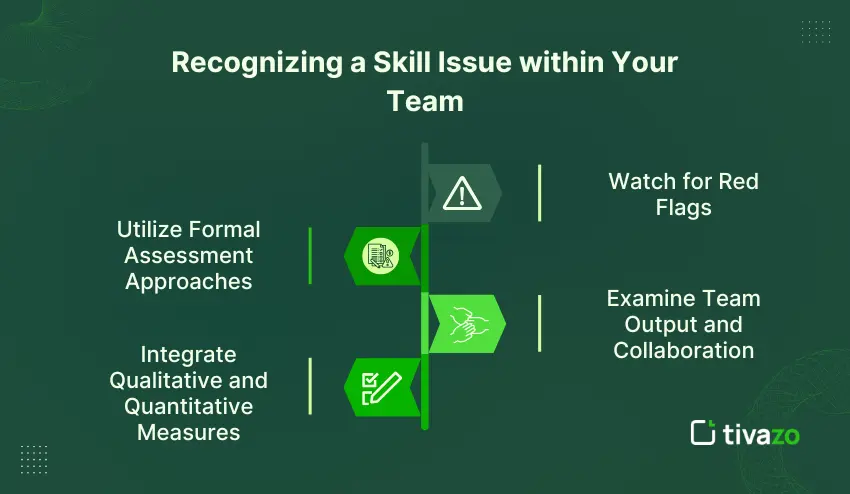
1. Watch for Red Flags
Missing deadlines, continual errors, or a heavy reliance on other employees can signal a skill issue. You should take note of employees who have trouble finishing assignments on their own of fail to meet expectations on a regular basis.
2. Utilize Formal Assessment Approaches
Formal assessment measures that utilize structured approaches to identifying performance problems include performance reviews, 360-degree feedback, and skill audits. All of these assessments can help provide clarity about the specific skill issues present. There are also standardized tests and skill assessment platforms that identify skill gaps, including technical skills, soft skills, and leadership skills. These types of assessments also provide concrete data.
3. Examine Team Output and Collaboration
Pay attention to the work of employees working together over time and how this collaboration affects overall productivity. Areas of weakness in teamwork, problem-solving, or decision-making can be an indicator of skill gaps.
4. Integrate Qualitative and Quantitative Measures
When evaluating assets in an organization, include KPI, project outcome measures, and employee survey measures, with more subjective observations made by a supervisor or coworker. Using both objective and subjective categories will ultimately provide the most complete view of employee skills and workplace skill gap experience.
If organizations regularly monitor the above indicators and stay plugged into things like talent, effective skill gap analysis, you can intervene early with skill development in skills impacting collaboration across teams, demonstrating value, and the workplace skill gap won’t negatively impact performance.
How to Fix Skills Gaps in Workplaces
When you recognize skill gaps early on, you’re strengthening your team and enhancing productivity. Being proactive in addressing skill gaps can structure change for long-lasting improvement while minimizing the risk of repeating mistakes.

Step 1 — Create a Learning & Development Strategy
The first step to addressing skills gaps is to carry out an analysis or skills gap to identify your skill weaknesses. Once you understand the training gaps, you can ensure you have purpose-built training programs by establishing training goals or objectives aligned with team and organization goals. By addressing the training needs for each employee or group of employees will allow you to create targeted development plans for skill-based growth.
Step 2 — Provide Targeted Skill Development Programs
Make sure you provide employees with development programs targeted at addressing technical skills, soft skills and leadership skills. In considering each employee’s learning style, mix programs using online training courses, workshops, on-the-job training, and micro-learning.
Step 3 — Encourage Mentoring and Coaching
Identify others within the organization who can act as mentors or coaches to employees. Direct, one-on-one assistance facilitates transfer of knowledge, engaging learning, and improvement of techniques and skills. Mentoring has significant value to employees in developing both technical skill and strategic thinking.
Step 4 — Encourage Continuous Upskilling and Reskilling
Many industries are evolving at a rapid pace; therefore, ongoing learning should be modeled and promoted. Understanding of upskilling and the techniques that are needed to feel competitive while reskilling and preparing for new positions will support talent development.
Step 5 – Utilize Learning Management Systems (LMS)
Take advantage of LMS platforms to keep track of performance and customize their training while integrating tools such as AI or gamification. Microlearning modules and interactive courses allow you to make learning more flexible and measurable.
By following these steps, organizations will efficiently address skill issues, increase team performance, and deliver valuable on-the-job learning opportunities for employees.
Common Mistakes to Avoid When Addressing Skill Issues
Regardless of intention, organizations tend to fall short when it comes to taking the right measures to address skill issues. Avoiding these common mistakes will help improve the effectiveness and longevity of training efforts.
- Not Diagnosing the Issue
When organizations focus solely on presenting symptoms such as missed deadlines or mistakes, without analyzing the skill gap behind those symptoms, those mistakes will recur. - Thinking of Training as a ‘One and Done’
Approach Skill development never ends, and after training, so should teaching moments. Courses or workshops rarely have lasting impacts. Learning while on the job and follow-up conversations are key. - Focusing Only on Hard Skills
Soft skills such as communication, collaboration, and leadership are equally important when it comes to meaningful employee development and impact in an organization. - Not Knowing Employees’ Skill Gaps
Not all employees require the same training. Offering the same training formats and material to all employees, with no variations, often results in some employees being underserved and others being bored. - Not Having Any Metrics of Success
If there is no way to quantify performance improvement, organizations will never know if the training is effective or if adjustments need to be made.
Avoiding these pitfalls will help you strengthen skill issue management and help build a high-performing workforce.
How to Prevent Skill Issues Before They Occur
It’s always better to prevent skill issues than to remedy them. Proactive actions ensure employees are competent and engaged, and enable you to build a sustainable workforce fit for the future.
- Hire For Adaptability and Learning Potential
Look beyond current skill sets. Candidates who are curious, adaptable, and quick to learn are less likely to fall behind in their skills at a later date. - Create Regular Training & Knowledge Sharing Programs
Offer regular ‘lunch and learns’, cross-pollination between teams, and continued policies such as internal knowledge repositories to keep skills up-to-date. - Build Transparency Around Career Paths
When your employees can see where their skills can take them and the skills they need to get there, they will be much more motivated and eager to learn to bridge any skill gaps. - Align Learning & Development Goals with the Company Goals
Learning and development should grow the individual and prepare them to make a contribution to the success of the business. Maximising the impact of L&D requires both to go hand in hand. - Foster a Culture of Curiosity & Continuous Learning
Foster an environment where innovation/experimentation is encouraged, cross-training, learning, and encouraging questions in the open, knowledge is shared and embraced.
Preventing skills issues not only allows you to build agility and resilience but also promotes the sustainability of employee retention and workforce development.
Conclusion
Recognizing the meaning of a skill issue can change performance delivery in the workplace. By finding gaps earlier and responding to them, organizations can support their employees to develop, be innovative, and deliver their best work.
Acting on skill issues addresses productivity, engagement, retention, and, too, creates a culture of learning and continuous improvement. By employing the right actions, such as targeted training, supported mentoring, and ongoing targeted upskilling, teams should be able to address skill deficits before business results are impacted.
Start identifying and closing skill deficits in your team now to turn skill issues and deficits into opportunities for growth and success.
